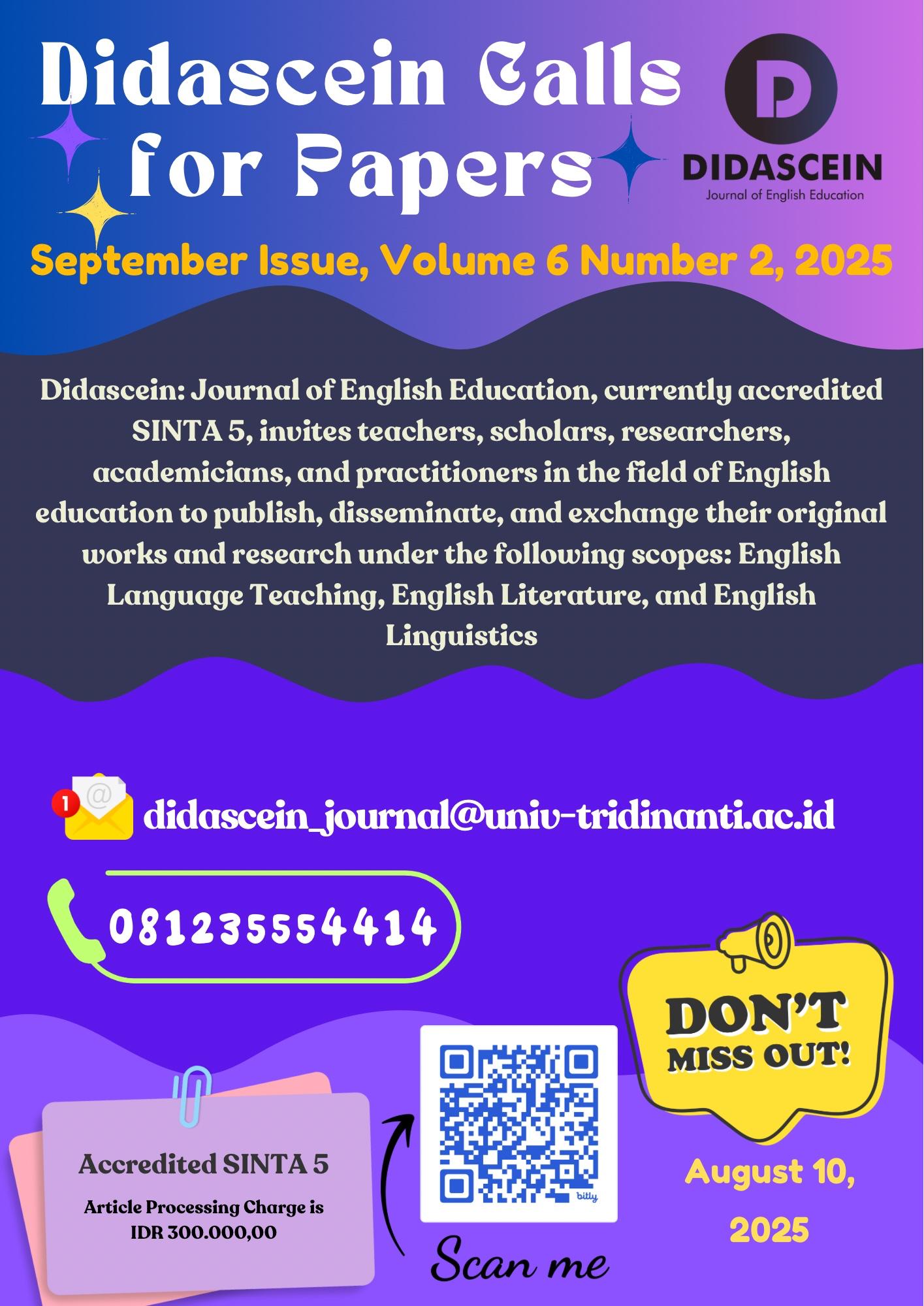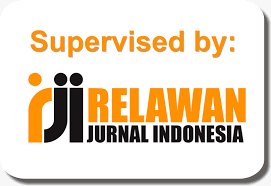Cultivating Secondary Students’ Speaking Skill Using Tea Party Technique
DOI:
https://doi.org/10.52333/djoee.v4i2.406Keywords:
tea party technique, descriptive text, speaking skillAbstract
The study focused on using the Tea Party Technique to improve the speaking abilities of eighth-grade students. The Tea Party technique is a cooperative strategy that encourages the students to actively communicate with their speaking partners. The purpose of the study was to examine the effectiveness of the Tea Party technique in improving the speaking abilities of eighth-grade students and to ascertain whether there was a difference in the speaking abilities between the students who received a treatment using the Tea Party technique and those who did not. A quasi-experimental design was employed by the researchers. The eighth-grade students of SMP Tri Dharma Palembang in the 2020–2021 academic year were involved as the target population. The researchers used cluster random sampling to choose the sample. 42 students participated as the sample, which was split into an experimental and a control group. Every group had twenty-one participants. An oral test was used to gather the data. The test was administered twice. Both the Paired Sample T-Test and the Independent Sample T-Test were used to analyze the gathered data. The results of the Paired Sample T-Test showed that the Tea Party technique was effective in improving the eighth-grade students' speaking skills. The Independent Sample T-Test also showed that there was a significant difference in the students' speaking skills between those who were taught using the Tea Party Technique and those who were not.
References
Al-Mekhlafi, A.M., & Nagaratnam, R.P. (2011). Difficulties in teaching and learning grammar in an EFL context. International Journal of Instruction, 4(2), 69-92.
Beers, K. (2003). When kids can’t read: What teachers can do: A guide for teachers 6-12. Heinemann: The University of Michigan.
Brown, H.D. (2004). Language Assessment and Classroom Practice. San Fransisco: Longman.
Cohen, L., Lawrence M., & Keith M. (2005). Research Methods in Education. New York: Taylor and Francis e-library.
Duong, T.M. (2014). An Investigation into Effects of Role-Paly in an EFL Speaking Course. Global Journal of Foreign Language Teaching, 4(2), 81-91.
Flowerdew, J., & Lindsay, M. (2005). Second Language Listening: Theory and Practice. London: Cambridge Language Education.
Goh, C.C.M., & Burns, A. (2012). Teaching Speaking: a Holistic Approach. New York: Cambridge University Press.
Gunadi., Novia, F., & Asmara, R. (2021). Promoting Engage Study Activate (ESA) technique to teach speaking skills. Didascein: Journal of English Education, 2(1), 26-31.
Hasanah, H.U. (2017). Teaching speaking using tea party technique. OKARA: Journal of Bahasa dan Sastra, 11(2), 263-276 .
Huda, N. (2000). A national strategy in achieving English communication ability: Globalization perspectives. Jurnal Ilmu Pendidikan, 4, 281-292.
Jumriana S. (2017). Using Tea Party Strategy to Improve Students’ Vocabulary Mastery at The Second Grade of SMPN 31 Makassar. Makassar: Muhammadiyah University.
Kencana, K. S. (2020). The Use of the Tea Party Technique to Increase the Students’ Speaking Skill at the Tenth Graders of the MA Mathla’ul Anwar Gisting. Lampung: IAIN Metro Lampung.
Kusnierek, A. (2015). Developing students’ speaking skill through role-play. World Scientific News, 1(2), 73-111.
Maulana, Daud, & Heriansyah. (2016). Students’ views on EFL speaking Problems. Syiah Kuala University.
Nation, I.S.P., & Newton, L. (2009). Teaching ESL/EFL. New York: Routledge.
Niculescu, C. (2011). An Overview of Cooperative Learning Strategies and Categories. Romania: Partnership Lab.
Pratiwi, D.S., & Prihatini, C. (2021). Problems and difficulties of speaking at Muhammadiyah Lampung university students in Covid Pandemic. Journal of English Education and Linguistics, 2(1), 40-49.
Rilani, Y., Mukhaiyar., & Fatimah, S. (2018). The effect of tea party strategy toward students' reading comprehension of narrative text. Proceeding of the Sixth International Conference on Language Teaching (ICOLET 6), 126-130.
Saeed, K. M., Khaksari, M., Eng, L. S., & Ghani, A. M. A. (2016). The role of learner-learner interaction in the development of speaking skills. Theory and Practice in Language Studies, 6(2), 235.
Sintawati, F., Soraya, K., Rosnaningsih, A., & Wulan, P.C. (2022). The effect of tea party learning model on English speaking skills at fourth grade students of MI Darul Ulum. JEDLISH: Journal of English Education and Language Teaching, 2(1), 15-19.
Suryaningsih. (2005). Improving the Students' English Vocabulary by Using Whispering Games. Thesis. Faculty of Language and Arts, UNM.
Thornbury, S. (2005). How to Teach Speaking. Essex: Longman.
Widiati, U., & Cahyono, B.Y. (2006). The teaching of EFL speaking in the Indonesian context: The state of the art. Jurnal Bahasa dan Seni, 2(34), 269-292.
Zyoud, M. (2016). Theoretical Perspective on How to Develop Speaking Skill Among University Students. Department of English Al-Quds Open University Jenin branch. West Bank. Palestine. Vol. 2.
Downloads
Published
How to Cite
Issue
Section
License
Copyright (c) 2023 Joe Kevin, Rahma Dianti, Gaya Tridinanti

This work is licensed under a Creative Commons Attribution-NonCommercial-ShareAlike 4.0 International License.







